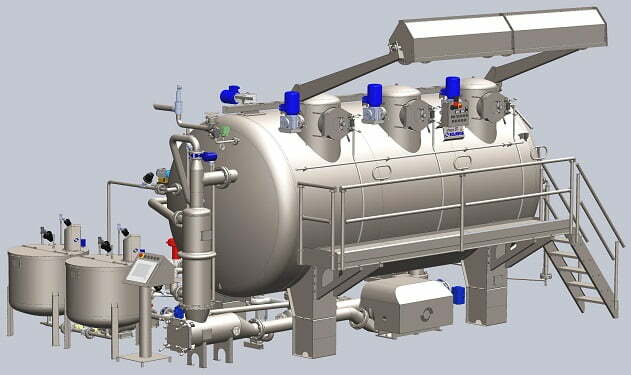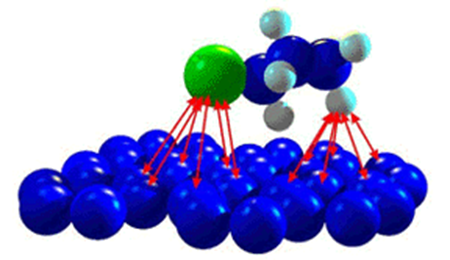Introduction
Present Status of ETP in Bangladesh
In Bangladesh only the factories dealing with the global fashion brands like Levi’s, GAP, H&M, M&S, S’Oliver, Uniqlo, Decathlon, Zara, JC Penney, etc. have the well-equipped effluent treatment plant, ETP facilities. Because they are big companies and they can maintain compliance issues. But except these big factories, there is a huge no of small and medium capacity factories dealing with mostly the local brands and very, unfortunately, they are not having ETP facilities. Though the big company can reduce their physical parameter (BOD, COD, TSS, TDS, TS, turbidity, pH and EC) in moderate stages, the small & medium factories usually do not afford of maintaining the ETP or have a low grade of ETP facilities whose effluents are below the ‘standard discharge limit’ prescribed by the Environmental Protection Agency (EPA), Bangladesh and their effluents are not suitable for discharging into water bodies. Unfortunately, they are (/have to) discharging the wastewaters or chemicals into surroundings to sustain in the market. On top of that, sometimes some factories only show the ETPs to the buyers to grip the orders, they usually don’t run the ETP. Why? Because these are growing company, they neither maintain ETP cost nor sustain without big orders.
Industrial pollutants are the major cause of surface water pollution in the urban region in Bangladesh. Dhaka and it’s adjacent districts like Gazipur, Narayanganj are the worst victim of unplanned industrialization; hence, exhibit drastic pollution in water sources. Although Dhaka City is surrounded by some peripheral rivers, the water of these rivers is too contaminated to use as potable water. There are 19 primary and at least 41 secondary discharge points to the rivers within the city. Improper discharge of untreated wastewater from various industries neighbouring these rivers pollute the water quality. A World Bank study reported that peripheral rivers of Dhaka took 1.5 million cubic meters of wastewater every day from 7,000 industrial units in surrounding areas and another 0.5 million cubic meters from other sources. Kaliakoir Upazila of Gazipur is only 25 km northeast of the capital city where an unplanned industrial cluster has been developed in the past 20 years. These industries are discharging 30 billion litres of effluent water annually in the nearby water bodies such as Mokosh Beel, Turag river and Ratanpur Khal. Large numbers of textile dyeing industries along with other industries discharge a large amount of effluents and solid wastes into different water bodies which eventually enter into the Shitalakshya River. Almost 80% of the total industries do not have any treatment plant and hence discharge toxic untreated industrial effluent into those water bodies.
Effects of effluents on environment
Solutions to the ETP problems in Textile industry
Considering the aforementioned situation, wastewater or effluent treatment is a major concern though the solution has become challenging for various unfavourable conditions. Inadequate education and low economic perspective are causing difficulties in implementing advanced treatment methods. Besides, lack of social awareness, the low willingness of companies to meet environmental compliance requirements and inadequate monitoring and enforcement by government authorities are the main reasons behind the scenario. Big companies are capable of establishing and maintaining the ETP facilities but small-medium factories cannot even think about the issues only because of high expenses. Hence, keeping their financial strength in mind, we propose a new form of ETPs and that is Area-based effluent treatment plant (AETP). This type of plants may be established in a certain industrial zone in collaboration with the small-medium category factories within that area and can share the same plants. By this way, they can both meet the compliance issues and save the environment from nakedly discharging the effluents within their budget. Yes, it is undoubtedly true that the one and only solution to this problem is growing social awareness. On top of that, there must be a strict monitoring body to ensure a safe and sustainable environment.
1. Sabit MI, Ali MA. Pollution of water bodies within and around Dhaka city: the Case of Gulshan lake. J Civ Eng(IEB). 2015;43(1):29–39.
2. Sultana MS, Islam MS, Saha R, Al-Mansur MA. Impact of the effluents of textile dyeing industries on the surface water quality inside DND embankment, Narayanganj. Bangladesh J Sci Ind Res. 2009;44(1):65–80.
Check out these related articles:










1 thought on “Solution to effluents treatment । Sustainable Wastewater Treatment”